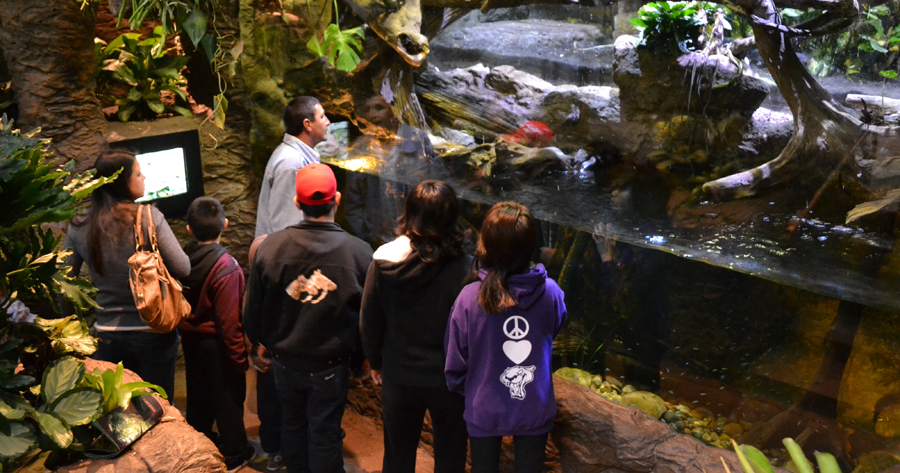By Russell Ploutz After recalling prior knowledge and preparing visitors for learning, the exhibit and included activities can facilitate learning processes by employing the following principles to improve understanding.
5. Grasp - capitalize on concrete experiences.
The Grasp principle describes how exhibits can most effectively leverage the unique experiences people come to zoos for - personal experiences with animals and nature. Exhibits can use concrete experience to help visitors understand abstract concepts such as ecological processes, critical to understanding zoo’s messages. The principle describes how to coordinate the presentation of abstract concepts with concrete experiences and vice versa.
6. Guide - facilitate meaning-making.
Exhibits can also assist visitors in understanding new information by guiding them in the meaning-making process. The Guide principle describes how exhibits can facilitate understanding with visitor activities and exhibit situations by stimulating additional cognitive processes.
7. Apply - reinforce learning with application.
After understanding new information, exhibits can encourage visitors to use their new knowledge to reinforce the learning. By applying information in new situations visitor’s understanding strengthens with increased contextualization. The Apply principle describes design strategies for visitor activities and exhibit situations promoting application of learning.
8. Transfer – connect information to other situations.
Similarly, the Transfer principle explains how learning is a continual process where people use information from previous experiences and in future ones - the learning experience is but one point in time. This principle explains how exhibits can embrace the dynamic process of learning by making connections to other situations outside of the immediate exhibit context.
9. Individual - facilitate different learning preferences.
The Individual principle describes how the learning process is unique to different visitors. We each have personal preferences for learning and since we control what we engage in zoos, exhibits need to reach the largest audience possible by appeal to many different types of visitors. The principle explains how to employ our choice and control to increase understanding by designing for each of Gardner’s Multiple Intelligences.
Part 3 in Russell Ploutz's series...

























